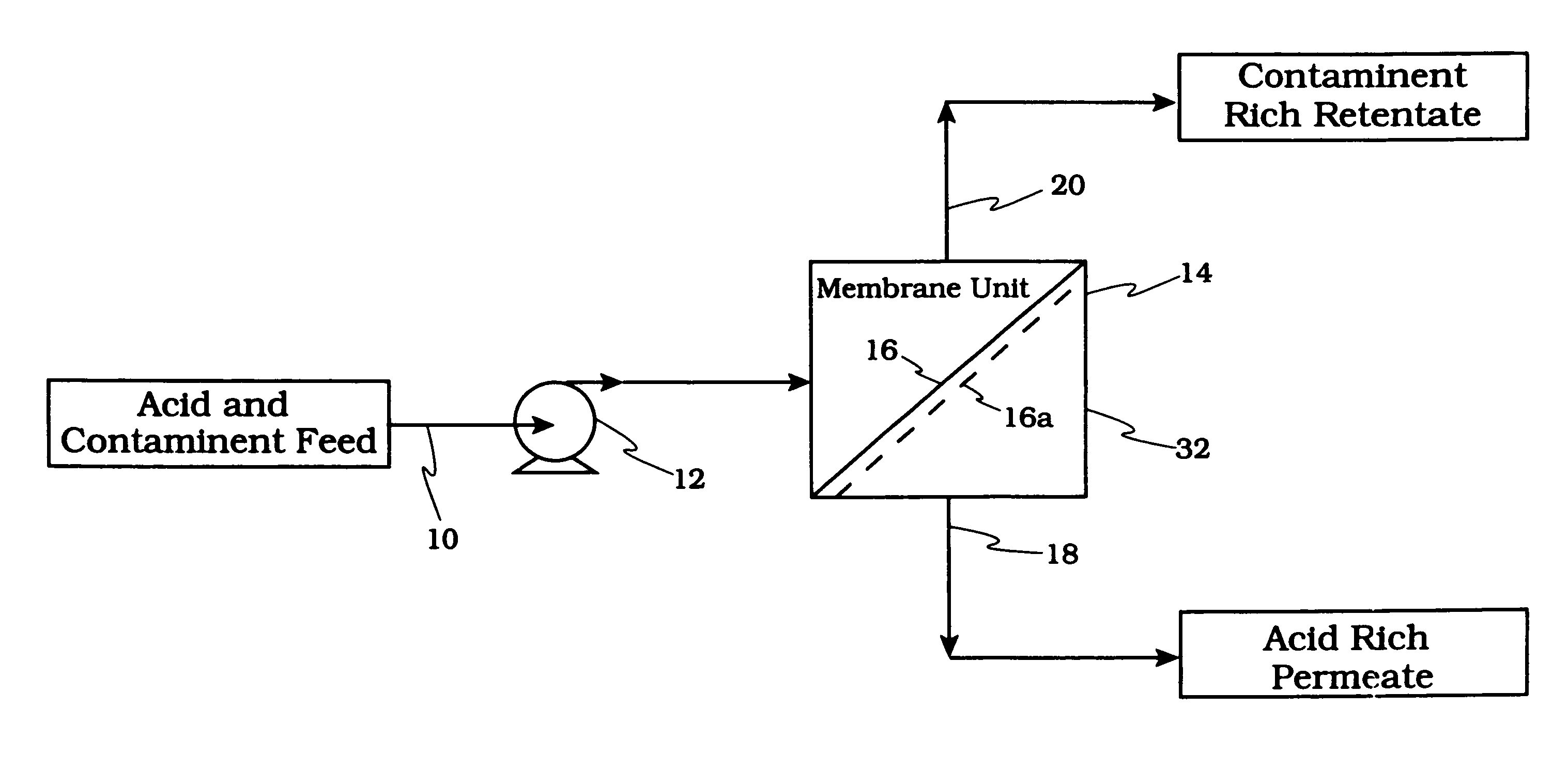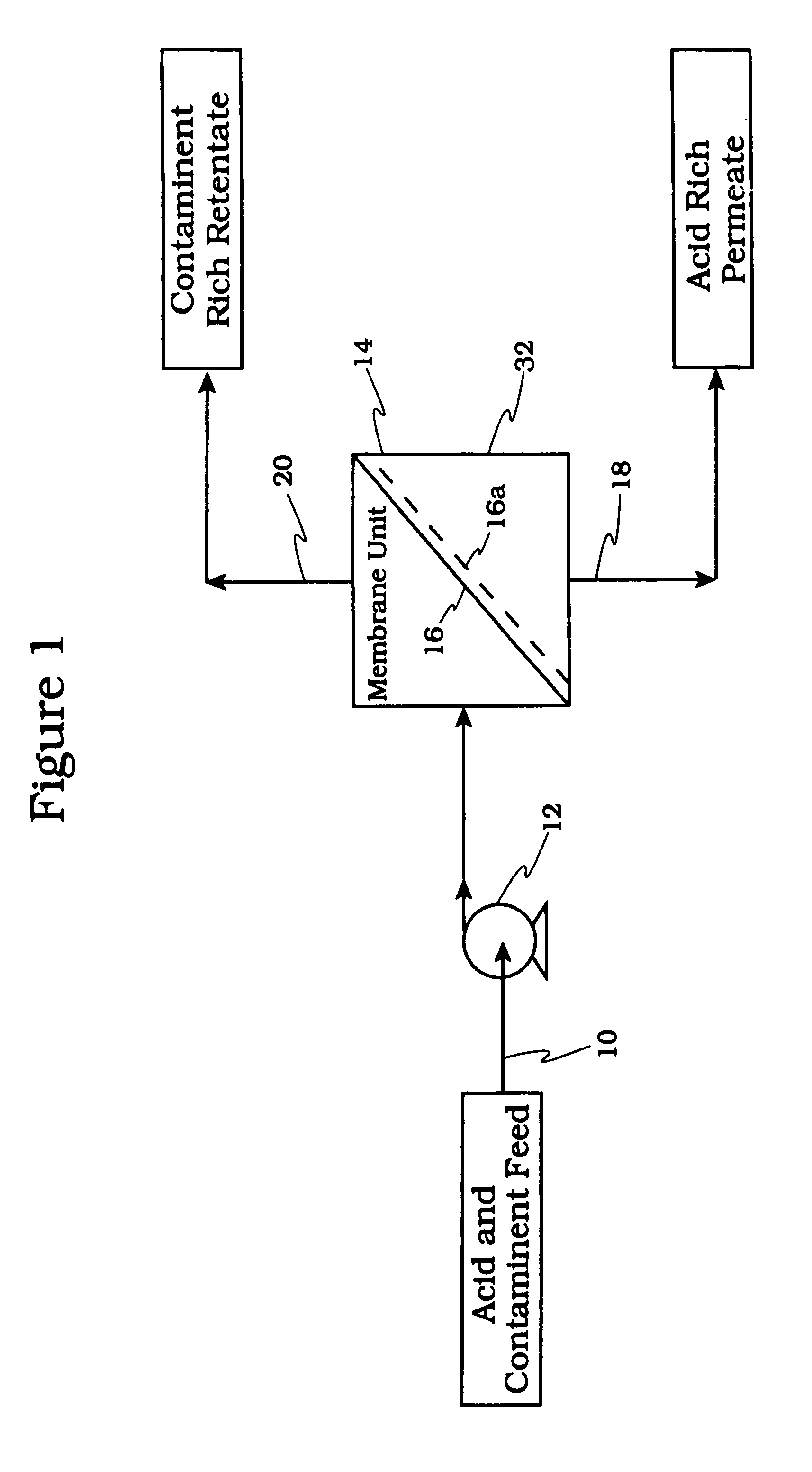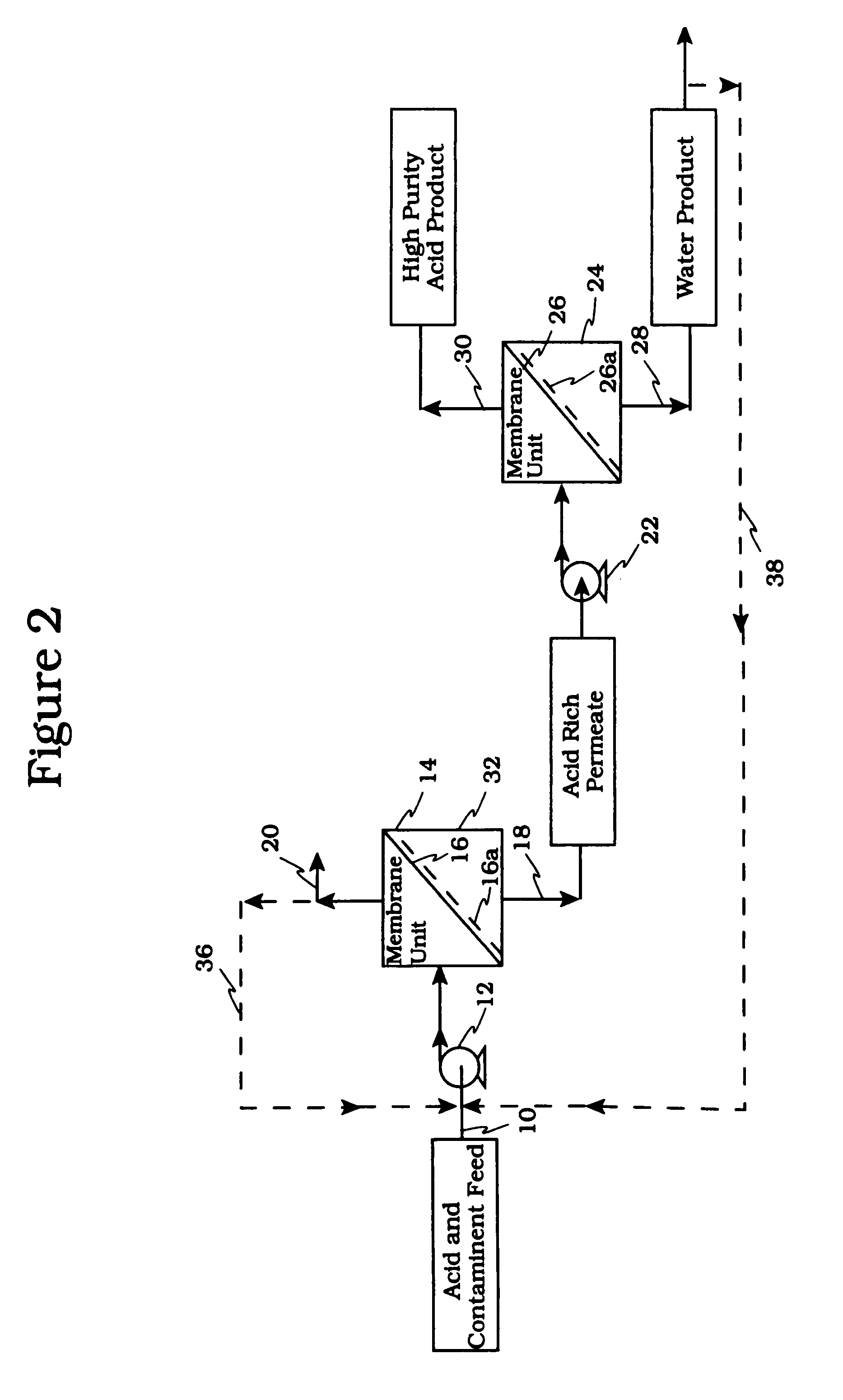Acid tolerant polymeric membrane and process for the recovery of acid using polymeric membranes
a polymeric membrane and acid-tolerant technology, applied in the field of polymeric membranes for separating acid from acid mixtures, can solve the problems of reducing the acid-catalytic activity of the acid stream, requiring costly process processing, and affecting the acid-catalytic activity of the process, so as to maintain or increase the alkylation efficiency, reduce the strength of the spent sulfuric acid stream 78, and maintain the acid strength
- Summary
- Abstract
- Description
- Claims
- Application Information
AI Technical Summary
Benefits of technology
Problems solved by technology
Method used
Image
Examples
example 1
[0084]0.9 g of polyvinylalcohol (PVA) was dissolved into an anhydrous 50 / 50 mixture of (DMSO) and dimethylforamide (DMF). In this example, PVA was added to a 15 g / 15 g DMSO / DMF solvent mixture. The PVA (Aldrich Chemical Co.) was 99% hydrolyzed and had a molecular weight between 124-186 Kg / mol. The solution was subsequently heated to 80° C. for approximately 5 hours. The solution was then cooled to 10° C. and mixed with 0.084 g of hexamethyldiisocyanate dissolved in an anhydrous 2.5 g DMSO / 2.5 g DMF mixture (also cooled to 10° C.). Preferably, the hexamethyldiisocyanate used has little or no exposure to water vapor, including water vapor from air. The solution visually became more viscous due to the reaction of the PVA and the diisocyanate. After approximately 2-3 minutes, the 2.7 wt % solution was cast onto a 0.2 micron pore size PTFE substrate using conventional casting knife procedures. This solvent system was selected due to its favorable solubility characteristics and its corres...
example 2
[0094]The reaction of the sulfuric acid with a crosslinked (with 1,6 diisocyanatohexane) poly(vinyl alcohol) (PVA) membrane was followed with FTIR. The reaction took place by placing the crosslinked PVA membrane into a spent sulfuric acid fluid. The thickness of the original membrane, as determined by SEM (shown in FIG. 12), was approximately 15 microns. The results are shown in the spectra of FIGS. 6 and 7. The spectrum of FIG. 6 shows the absorbance of a teflon membrane support having a nominal pore size of 0.2 microns, while the spectrum of FIG. 7 shows the initial and used Gore-Tex supported PVA membrane, respectively. The spectra show that loss of the alcohol group occurred, which was “replaced” with a sulfate moiety.
example 3
[0095]The schematic of FIG. 8 shows a membrane testing system which was used to evaluate the membranes. In reference to FIG. 8 the conditions used in the evaluation were:
Feed Vessel 810, Volume: 3000 ml
Pump 826, Rate: up to 1 gallon / minute (usually run at 0.63 gallons / minute)
Heat Exchanger 824: 1.5″ diameter and 18.75″ length, 2.18 ft2 surface area
Membrane 816, Effective Surface Area in Use: 24 in2
Membrane 816, Maximum Operating Pressure Test Cell: 1000 psig
Chiller 822 to Maintain Desired Feed Temperature
[0096]In operation to maintain a given temperature, heat exchanger 823 is operatively connected to a chiller 822. The spent acid is directed via line 820 to a membrane cell 816. The permeate product which is rich in acid and water is collected in a permeate vessel 818. The retentate rich in hydrocarbons is recycled via back pressure regulator 814 and line 812 to the feed vessel 810. The permeate product and retentate are analyzed for acid, water and hydrocarbon concentration using w...
PUM
| Property | Measurement | Unit |
|---|---|---|
| pore-size | aaaaa | aaaaa |
| pore size | aaaaa | aaaaa |
| pore size | aaaaa | aaaaa |
Abstract
Description
Claims
Application Information
 Login to View More
Login to View More - R&D
- Intellectual Property
- Life Sciences
- Materials
- Tech Scout
- Unparalleled Data Quality
- Higher Quality Content
- 60% Fewer Hallucinations
Browse by: Latest US Patents, China's latest patents, Technical Efficacy Thesaurus, Application Domain, Technology Topic, Popular Technical Reports.
© 2025 PatSnap. All rights reserved.Legal|Privacy policy|Modern Slavery Act Transparency Statement|Sitemap|About US| Contact US: help@patsnap.com



